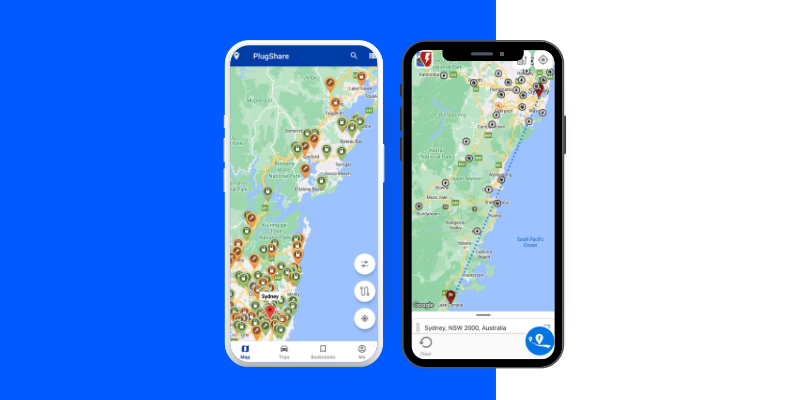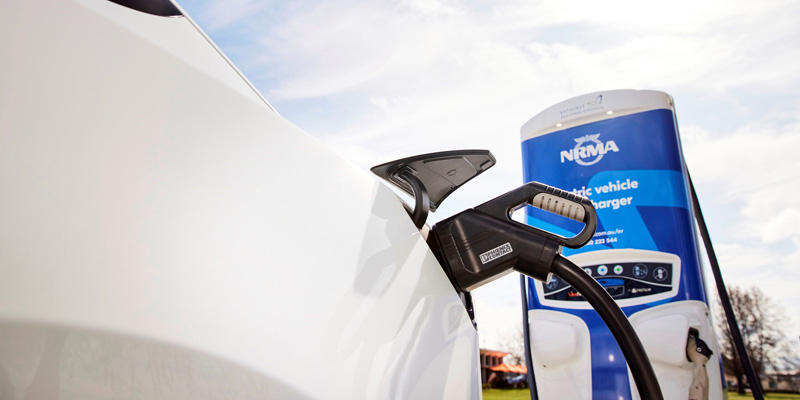

It’s no secret, public EV charging infrastructure in many parts of the world, including Australia, is still growing.
The NRMA has already made inroads on helping EV charging infrastructure get going in Australia, and is working hard on expanding that further as part of its EV game plan.
But while the network reaches maturity, there are some important things to take note of before hitting the open road in your EV.
First and foremost, you will need to plan your route. While the NRMA, along with government and other networks, is working towards rolling out a broad and more expansive range of charging options, it will be some time before EV chargers are as ubiquitous as service stations.
A Better Route Planner (ABRP) is a smartphone app that many EV owners use to work out the best places to charge along the way.
If you’re planning to stay in accommodation along the way it can also be a good idea to use the Plugshare app to find motels and hotels that offer free charging to EV owners.
It’s also a good idea to use Plugshare to check if there are outages at the chargers you plan to use. Do this before you leave your last destination so you can make changes to your route if necessary.

Additionally, it’s wise to have some backup options in case your first charging option is out of order.
NRMA is working hard to improve uptime by upgrading hardware and are in the planning stages of its new national network, but the current sparse penetration of chargers means downtimes may impact your journey.
This also means planning your trip so that you arrive with enough range to get to your Plan B or Plan C if necessary.
(By the way, NRMA’s smartphone app will have realtime availability of its newly funded networks in the not-too-distant future - stay tuned for more updates on that!)
Before you leave, make sure you have downloaded the network apps for your chosen charging sites if you plan to use paid chargers. Note, neither Plugshare nor ABRP take payments.
If you are travelling in more remote areas make sure to bookmark charger locations in case you lose mobile phone reception.

Road trips on roads less travelled, or Plan B or C charging options may also require “bring-your-own” charging cable. You may need to buy or borrow cables with different connectors for various charging possibilities.
If you are uncertain what extra cables you could need, EV ownership clubs and social media groups, like NRMA’s EV Community, are great sources of advice and may lend out cables.
Once you arrive at an EV charger, it’s good manners to check in on Plugshare if you plan to leave your car while it is charging. This helps other EV owners know when to expect you to return. You can also leave helpful notes in your check-in for other EV drivers.
Get to know your EV before you leave so you know what to expect in terms of driving range and charging time. Remember that inclement weather - rain, wind, and extremely hot or cold weather - can affect your driving range. Alter your route accordingly.
Be sure of the maximum AC and DC charge rate of your EV. It may well be less than the maximum charge rate of any particular charger.

Understand that your EV will only reach the maximum charge rate if the battery State of Charge (SoC) is low when you start charging. As the battery SoC “fills up”, the charge rate will slow down.
For this reason, it is best to only charge to 80-90 per cent on DC fast chargers unless you absolutely need the extra range to reach your next destination. This is because recharging the last 10-20 per cent takes a lot longer, and others may need to use the charger.
The more powerful the EV charger, the faster it will recharge your car. Here are some typical “charging speeds” expressed in kilometres per 15 minutes.
| Type | Typical location |
Typical charger rate |
Range added per 15 minutes |
| DC fast charger | Public carpark or highway roadstop |
50kW - 350kW | 75 - 500km |
| AC destination charger | Shopping centre or public carpark |
7kW - 22kW | 10-16km |
| Three-phase charger | Showground, roadhouse or campground |
11kW - 22kW | 16-33km |
| Powerpoint (GPO) | Home | 2.4kW (single-phase 10amp) |
4km |
A drive up and down the east coast of Australia, or even in the eastern regions, is a fairly straightforward affair.
You’re likely to be able to use a public DC fast-charger which has its own cable, or a standard Type 2 cable for most AC destination chargers.
More remote areas may require a bit more planning, such as checking Plugshare to see if roadhouses or campgrounds require a three-phase, 20 amp or 32 amp adapter.
Quite simply, every power outlet is a potential charging point (just remember to seek permission if it’s not a public charging site!)

Now, we know what you're thinking. That's a lot of leads, and they can take up a fair bit of room in the boot. But, as you’re driving an EV there’s a good chance you’ll have extra storage space under the bonnet - or the “frunk,” as some call it.
Other items that are important to include when you’re packing for any long-distance road trip in an EV are:
So there you have it, folks. Your essential EV travel kit.
Keep in mind that as more public EV charging infrastructure is installed across Australia, some of the items in this kit will become unnecessary.
Remember to check how the NRMA Electric network rollout is going before leaving too! Soon you’ll be able to do this via NRMA’s very own smartphone app, and you can also check PlugShare.